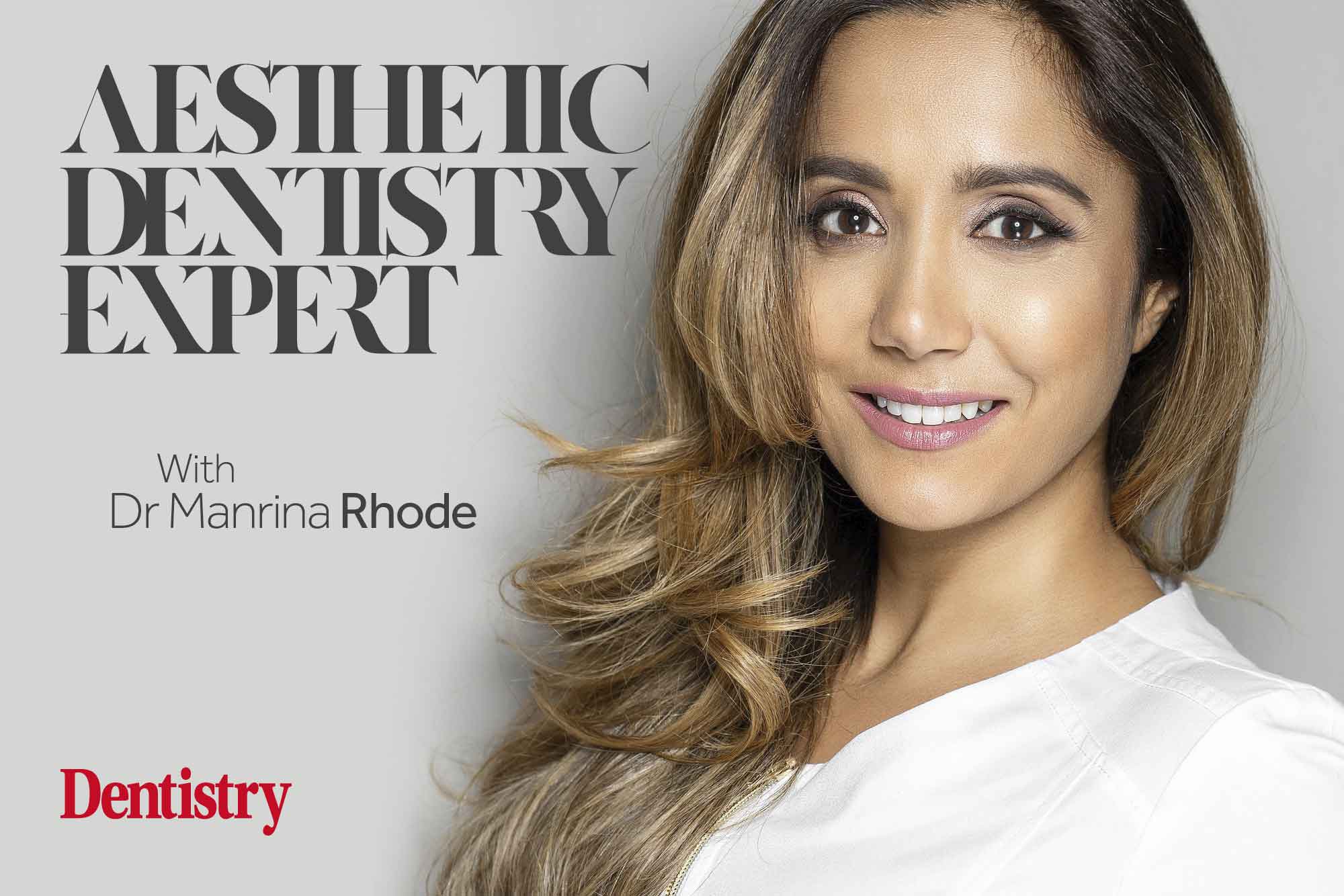
This month Manrina Rhode discusses veneers as a solution for crooked teeth, and whether it is in the patient’s best interests.
Can veneers fix crooked teeth: the age old question. The easy answer is yes.
Will there be repercussions? The answer is also yes.
To create the best aesthetic result its always best to straighten teeth before veneering them. This helps align the gums and helps the end result tooth from feeling and looking too thick or thin.
Aligning the teeth before placing veneers also helps with cleaning teeth. When a veneer is placed on an in-standing tooth, the veneer plus tooth can create a thick contact point. When the tooth is rotated, by veneering the front surface, the palatal surface remains rotated. This can feel strange to the patient’s tongue or create a food trap.
Prepping rotated or protruding teeth to be able to place straight veneers can also cause sensitivity or even cause the tooth to devitalise.
Additive wax up
When a patient refuses any orthodontic alignment prior to their smile makeover with porcelain veneers, it can help to create an additive wax up of their smile.
With in-standing teeth this isn’t such a problem. However, it can result in quite thick veneers.
When teeth are protruding or rotated, there may be a compromise to be reached by broadening the arch to minimise the preparation required. The key is broadening the arch to minimise preparation required of the teeth without creating an overly bulky final result.
If the wax up is mainly additive, it can also be used to create a Trial Smile. A stent is created from the wax up. Fill the stent with a temporary veneer material such as pro-temp or luxa-temp and place the filled stent over the patients un-prepped teeth. Then allow the material to set.
Once the material has set, carefully peel the stent off and carve off the excess to get some idea of what the patients final smile will look like.
This allows you and your patient to have a conversation about the compromise created by not aligning the teeth prior to veneering. The alternative is to prep the teeth.
However, then the risk of devitalisation needs to be carefully explained to the patient, written and signed in a consent form. I would write a separate consent form explaining that orthodontics were strongly advised before treatment. This is to gain a better result for the health of the teeth and aesthetically.
Is it in their best interests?
As a clinician you also need to decide at what stage you decline completing the case without prior orthodontics. Either because you feel it’s not in the patients best interests or if you are unsure of the aesthetic result achievable.
With the range of quick orthodontic options available these days it’s unlikely one option can’t be found to even partially align the teeth to create a safer, better result.
The problem can also occur when a patient agrees to a brace but refuses life long retention after orthodontics.
In some cases, changing the shape of the smile invades the patient’s free way space, for example when broadening premolars with veneers.
Without retention, the cheeks can push on the veneers which then push the teeth in to recreate the narrow arch. So, retention becomes important even without prior orthodontics.
Can veneers fix crooked teeth? Usually yes.
Is this a preferred treatment option? Not usually.
Catch up with previous Aesthetic Dentistry Expert columns:
- Choosing aesthetic dentistry
- New year, new you
- Restoring a single central incisor
- Broken veneers
- Trust and communication
Follow Dentistry.co.uk on Instagram to keep up with all the latest dental news and trends.


